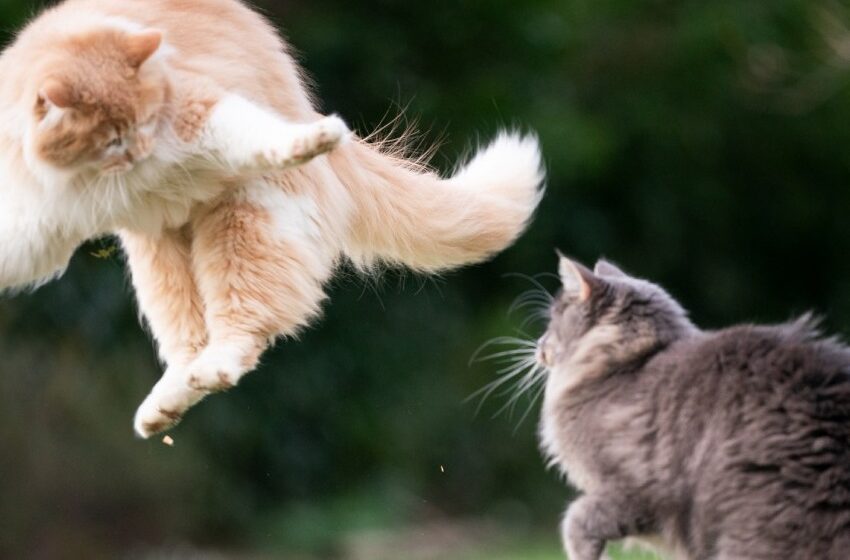
Playing or fighting? Scientists examined cat videos to distinguish
Have you ever feared that your cats’ play was becoming too rough? A recent study published in Scientific Reports explored feline play and conflict.
Their goal was to use basic, observable actions to distinguish between play and potential confrontations. This is significant since fights can result in injury to both animals and humans. If your cats are not getting along, you may even have to find a new home for one of them.
Noema Gajdo-Kmecová of the University of Veterinary Medicine and Pharmacy in Slovakia and the University of Lincoln in the United Kingdom evaluated 105 videos of interactions between 210 cats for the study.
The research group then created an ethogram, which is a catalog of unique behaviors used to investigate animal behavior.
The researchers searched YouTube using phrases such as “cats play fighting” to locate relevant footage.
Each video was evaluated to determine which of these actions each cat displayed. Each encounter was then statistically evaluated to determine whether behaviors occurred in clusters.
The researchers then split the videos into three distinct interaction categories.
Includes 40% of cats from the videos, as well as wrestling and minimal vocalization.
Agonistic: agonistic actions include hostility, submission, and threatening behavior. 32% of the sample cats belonged to this category, which was characterized by vocalization and periodic spells of inactivity.
This group comprised 28% of cats and was more closely related to the playful group than to the aggressive group. This bunch of cats interacted for extended periods of time with gaps in between.
As a cross-check, the behavioral categories observed in the films corresponded fairly well with the way in which the four writers, who are specialists in cat behavior, described each interaction.
If your cats are wrestling, they are probably engaged in play. When cats in a multi-cat household experience friction, they tend to avoid physical contact. They will instead employ offensive and defensive maneuvers that do not involve prolonged direct contact, such as slapping.
Keep Reading
Fighting is likely occurring if your cats are vocalizing and chasing between intervals of inactivity (such as crouching). Vocalization is an especially significant indicator that this interaction is hostile rather than humorous. If both cats are chasing, it is acceptable, but if one cat is chasing and the other is fleeing, it is undesirable.
The intermediate level is the most difficult. It contains components of both playful and agonistic actions, but is more closely associated with the playful group. This shows that, depending on what transpires during the interaction, play may become antagonistic.
Particularly, the authors observed frequent interruptions within the engagement, which may allow cats to review their partner’s interest in playing and prevent hostility from escalating from play.
This is the first study to use a scientific method to cat behaviors that can be identified by anybody. It describes three types of interactions that may be used to distinguish between play and fighting in cats.
We are all aware of when cats are truly fighting, but the greatest strength is in identifying situations that could be acceptable, but could also escalate.
The study focused on easily observable behaviors, although cats may also be incredibly subtle. In addition to face expression, ear location, and tail position, they also use pheromones to communicate. These small cues may be just as crucial for distinguishing what is playing from what is fighting.
If your cats are true best friends (they sleep close together and share food and toys), the occasional bout of aggressive play is OK.
However, if your cats do not get along, you may need to monitor for symptoms of aggressive behavior. Tension between cats is not always apparent, but it can have negative effects on their physical and mental health.
A cat-astrophe can be avoided by seeking assistance from a cat behavior specialist as soon as possible if you are unsure whether or not your cats get along.




